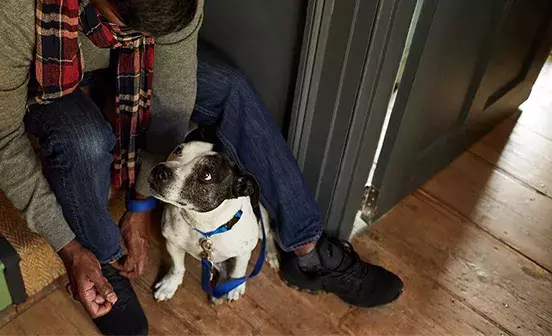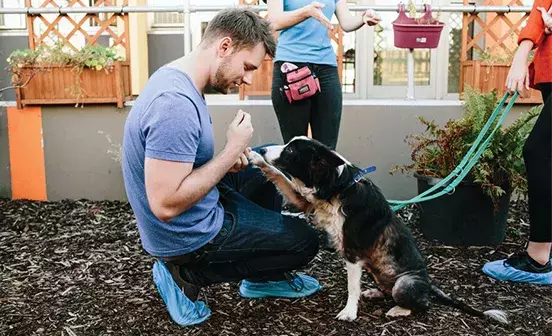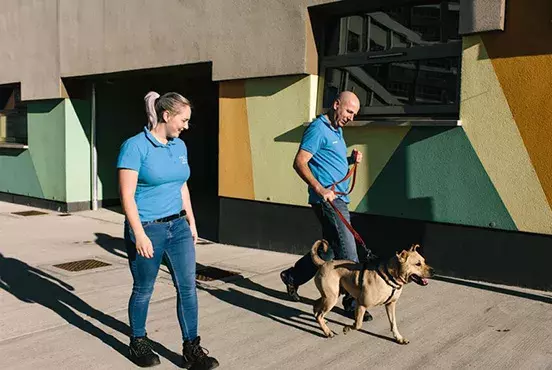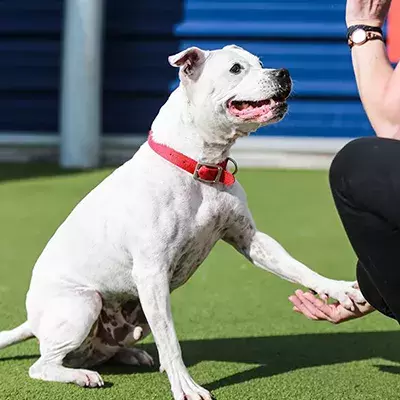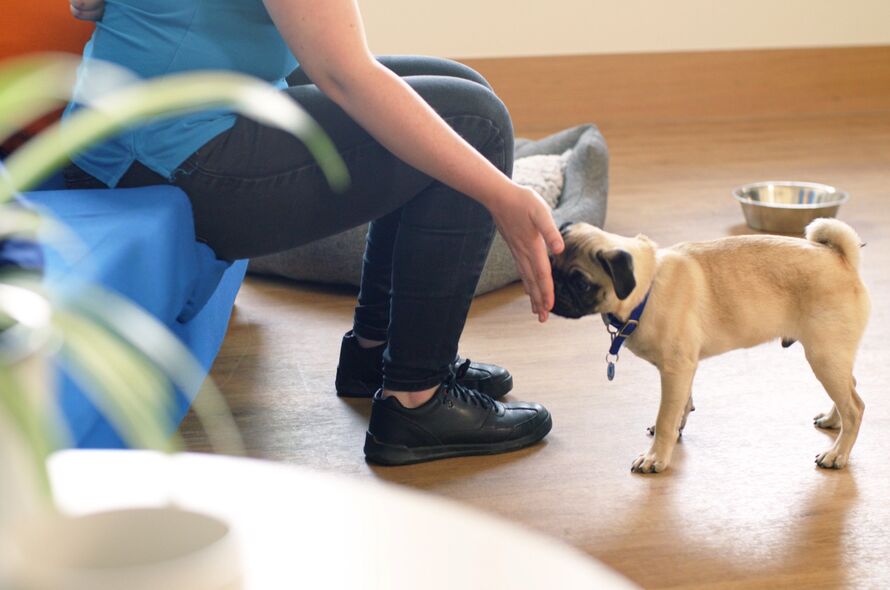
A nose touch is the action of asking your dog to touch or press their nose onto a specific spot or target, such as your hand. A nose touch can be a useful behaviour for your dog in lots of different situations.
For example, a nose touch can be a calm, polite way for your dog to greet people and will stop your dog jumping up. A nose touch can also give your dog a focus to come back to when you recall them.
You can also teach your dog a nose touch as the start of teaching them to press buttons, or to shut cupboard doors for example.
Watch our step by step guide on how to teach your dog a nose touch. This is a great foundation for learning more advanced skills, such as closing a cupboard door, but is also a great way to focus your dog’s attention.
STEP 1: ENCOURAGE YOUR DOG TO FOCUS ON YOUR HAND
Settle your dog into either a sit, or a relaxed standing position somewhere away from distractions. Once your dog is settled, hold your palm out parallel to the side of them, but not too close. Most dogs will naturally investigate your hand with their nose. If your dog moves away from you, stop and try again in a few minutes with your hand further away. As soon as your dog investigates your hand, mark this behaviour by saying “yes” and then rewarding them. You can use a portion of your dog’s daily food as a reward, but if they’re not interested in this you may need to use something tastier. Repeat this process until your dog can successfully do this five times in a row.
STEP 2: REWARD YOUR DOG WHEN THEY TOUCH YOUR HAND
Keep practicing, but now only reward your dog when their nose touches your hand. Some dogs may struggle with this exercise, especially if they dislike hands or are naturally quite timid. In this case, you could try placing a treat in between your index finger and thumb to encourage them to investigate or you could rub something tasty like ham or cheese on your palm. If your dog is becoming frustrated or disinterested you may have moved too quickly, so go back to the first step.
STEP 3: INTRODUCE A VOICE CUE
Once your dog is consistently touching your hand with their nose, you can add in a voice cue. To do this, go through the process and say “touch”, as you offer them your hand. When your dog successfully touches your hand, say “yes” and give them a reward. Keep doing this over a few different sessions to make it a habit.
STEP 4: MOVE YOUR HAND
Now you’ll want to make sure your dog can reliably perform a nose touch in different places by changing the position of your hand. Do this by saying the word “touch” and then offering your other hand for the nose touch or by holding your hand further away from your dog and in slightly different positions or heights. When your dog successfully touches the correct hand say “yes” and give them a reward.
STEP 5: INTRODUCE A NEW TARGET
If you dog is doing well with the nose touch training you can introduce a target. For example, you could try covering your hand with a post-it note and then repeating the same process. Once your dog has got the hang of this, transfer the post-it to a different location. Test your dog’s nose touch by pointing at the post-it and saying “touch”.
STEP 6: INCREASE THE LENGTH OF THE NOSE TOUCH
Once your dog is familiar with the “touch” cue you can begin to build up the length of their nose touch. When your dog does a nose touch, count to one second in your head before rewarding them. When they can consistently hold their touch for one second, see if they can increase to two seconds before you reward them. Continue to increase a second at a time, making sure to go at your dog’s pace. If your dog is struggling to hold a nose touch for the amount of time that you are counting, go back to when they were last successful and try again.
Download these tips as a handy advice sheet to use for regular training:
